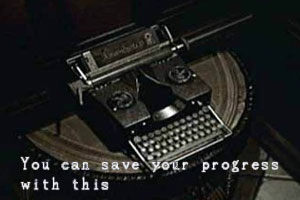The end of the quick save?
 Developers shrug off the constraints of the save game feature.
Developers shrug off the constraints of the save game feature.
An interesting debate has started concerning the future of the humble save game feature, something that has been at the heart of videogames for many, many years. As games become ever more complex, developers appear to be rethinking the function the game save serves in videogames.
More recently the save game feature has acted as a recovery position - if you've messed up a section, it gives you another chance. But there are games being released now that want you to make mistakes - they want to use it as part of the experience. When the game save feature first arrived, many bemoaned its appearance. "Games will be too easy," they said. "It adds a new margin for error," they wept. "Things will never be the same."
However, in many ways, the ability to save progress added new dimensions to games, and opened up the possibility of personalising and customising one's gaming experience. But, ironically, it is the possibility of customisation that is throwing the idea of game saves to the wind. In Fable 2, for example, mistakes and errors actually feed into the game experience and affect the outcome. In short you are not expected to play the game perfectly.
The concept of playing a game without fault no longer applies – you play the game how you play it. Accidents and errors contribute to the richness of the experience; there is no longer any right or wrong. Obviously, games are so large now that players need to be able to save their progress, but the idea of using the save point to undo mistakes might be about to undergo a radical transformation.
Of course, there was a time before one could save progress in videogames. In the early days, playing videogames involved marathon sessions not because they were so addictive but because switching the game off would mean that one would have to start all over again. Of course, this gave the best games an extra edge – and made the worst ones utter wastes of time and money. It was not possible to undo mistakes, and when it was game over, that would be it. But as games became larger and more complex - and technology allowed it – the game save quickly became an important design feature. First on home computers, where storage was cheap and easily accessible, a game like Football Manager could be played over days or even weeks without eating your own hands from sleep deprivation. Later on, particularly with PCs, games could be quickly saved on to hard disk. Indeed, this created a debate about the ‘quick save’ and its apparent removal of the possibility of failure. Did you use too much health since your last save? Reload. Did you use too much ammo? Reload.
Meanwhile, on consoles, many developers introduced the passcode that would (more or less) accurately store progress. Later, it was possible to save game progress on to cartridge and then, with the advent of CD based games, the ubiquitous memory card appeared.
There are, of course, two broadly different approaches to game saves. One allows the player to save their progress while the other allows players latitude to correct their mistakes. The first kind appears in games like Resident Evil (which uses the famous typewriter to record progress). In these games, the player works to each save point which really acts as a way-point. In Call of Duty 4, there is a similar system, but it works on an automatic basis, arbitrarily deciding where you would want to save (and not always getting it right).
As already mentioned, other First Person Shooters on the PC use the quick save feature, where the number of save points are effectively limitless. But the real point of the quick save is to allow the player to master each stage of the game, and this will inevitably lead to reloading sections (unless, of course, you’re really brilliant).
But it is on the consoles where the idea of save points is being reconsidered. Perhaps the most radical idea is that designers can do away with some of the game design ‘grammar’ that one encounters with save points. When considered objectively, save points are essentially interventions into the pacing of the story; save points frequently bracket end-of-level baddies or tough passages of play. We have spoken elsewhere about end-of-level baddies and how they are there to artificially move stories along. With the removal of save points comes the possible destruction of the designer-created storyline.
Animal Crossing (a game much loved here at FB Towers) is a brilliantly perverse example of this – they even have a special character who pops up if you try to cheat by not saving a game. You have to save your progress but the game demands that you use this feature honestly, and not as a means of undoing mistakes. Indeed, this fits in perfectly with Animal Crossing’s non-linear game-play, and it becomes clear that the designers want the players to form their own narratives.
This is a deceptively complex idea, especially when you consider that many games designers still act like they’re frustrated film directors. In order to enjoy their games, you must slavishly follow their storylines, and react how they want you to react. And in many ways, the save point is one way that a games designer can force you to adhere to their stories and not create your own.
It is perhaps time that games designers pull back, and accept that people should be allowed to affect the world in which they play. It is this, their unique impact on the game environment, that should be committed to the memory stick, not their ability to comply with a designer’s wishes.




